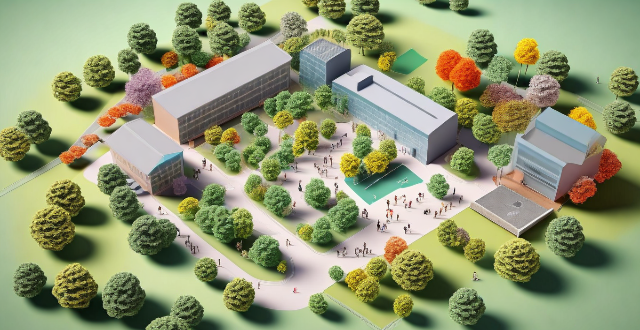Universities contribute to climate change research and education through various initiatives. They establish research centers for interdisciplinary collaboration on climate modeling, renewable energy, and sustainability science. Funding from multiple sources supports these ambitious projects. In education, universities integrate climate change into the curriculum, engage in public outreach, and encourage student involvement. Sustainable campus operations demonstrate commitment and provide real-world examples. Universities also influence policy and engage in international collaborations to address the global nature of climate change. Overall, universities play a crucial role in advancing understanding and solutions for climate change.

How Universities Can Contribute to Climate Change Research and Education
Research Initiatives
Establishing Research Centers
Universities can establish research centers dedicated to climate change, where interdisciplinary teams of scientists, engineers, social scientists, and policy experts collaborate on cutting-edge research. These centers can focus on areas such as:
- Climate Modeling: Developing models that predict future climate scenarios.
- Renewable Energy: Researching ways to harness clean energy sources like solar, wind, and hydroelectric power.
- Sustainability Science: Studying the impact of human activities on ecosystems and finding sustainable solutions.
Funding and Partnerships
By securing funding from government agencies, private foundations, and corporate partners, universities can support ambitious research projects that might not be feasible through traditional academic channels. Partnerships with industry can also help translate research findings into practical applications and technologies.
Educational Programs
Curriculum Development
Integrating climate change education across disciplines ensures that students understand the complexities and urgency of the issue. This includes:
- Coursework: Offering courses that cover climate science, policy, and sustainability practices.
- Interdisciplinary Degrees: Creating programs that combine environmental studies with engineering, business, or other relevant fields.
Public Outreach and Service Learning
Engaging the public through outreach programs and service learning opportunities helps raise awareness about climate change and encourages community involvement in solutions. Examples include:
- Community Workshops: Hosting events that educate local residents about climate issues and how they can make a difference.
- School Partnerships: Collaborating with K-12 schools to offer mentorship programs and youth climate initiatives.
Student Involvement
Encouraging student participation in climate action is crucial for fostering a culture of environmental responsibility. Activities might include:
- Clubs and Organizations: Supporting student groups focused on climate advocacy and sustainability projects.
- Hackathons and Competitions: Hosting events that challenge students to develop innovative solutions to climate-related problems.
Facilities and Operations
Green Campus Initiatives
Universities can lead by example by implementing sustainable practices on their campuses, such as:
- Energy Efficiency: Retrofitting buildings with energy-efficient systems and using renewable energy sources.
- Waste Reduction: Implementing comprehensive recycling programs and reducing food waste through composting and donating unsold items.
Investment in Infrastructure
Investing in infrastructure that supports both research and educational goals is essential. This includes:
- Laboratories: Building state-of-the-art labs for climate-related experiments and simulations.
- Technology: Procuring advanced technology for data collection, analysis, and dissemination of climate research findings.
Policy Influence
Advocacy and Consultation
Universities can use their expertise to influence policy decisions at local, national, and international levels by:
- Advisory Roles: Participating in governmental committees and consulting on climate policies.
- Research Impact: Conducting research that informs policymakers about the effectiveness of various climate strategies.
International Collaboration
Given the global nature of climate change, it's important for universities to engage in international collaborations to share knowledge and resources. This can involve:
- Partnerships: Forming partnerships with institutions in different countries to work on joint research projects.
- Conferences and Seminars: Hosting or participating in international conferences that focus on climate change issues.
In summary, universities play a pivotal role in combating climate change through research innovation, educational programs, sustainable operations, policy influence, and international cooperation. By integrating these efforts into their core mission, they can contribute significantly to our understanding of climate change and the development of strategies to mitigate its effects.